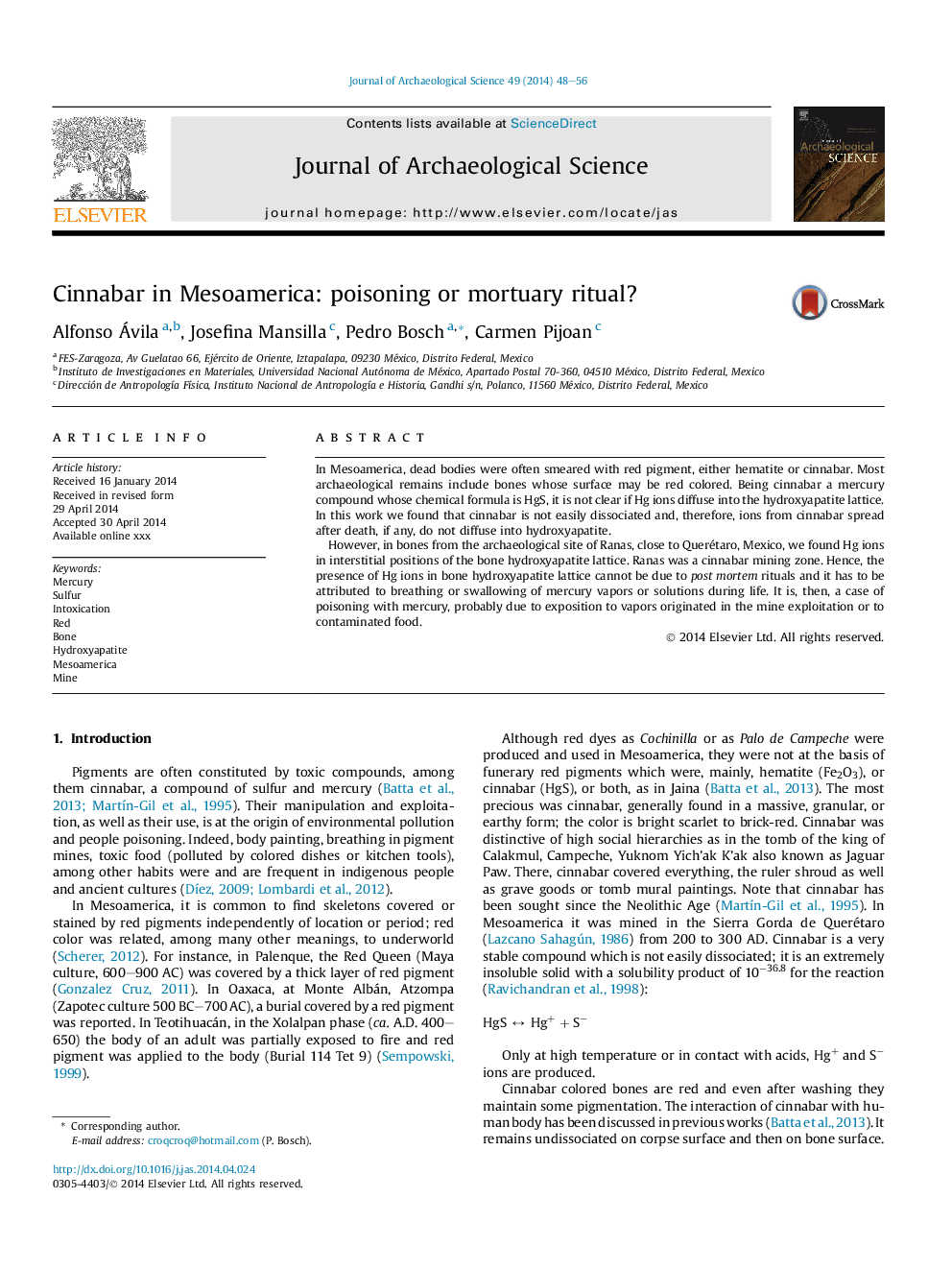| Article ID | Journal | Published Year | Pages | File Type |
|---|---|---|---|---|
| 7442906 | Journal of Archaeological Science | 2014 | 9 Pages |
Abstract
However, in bones from the archaeological site of Ranas, close to Querétaro, Mexico, we found Hg ions in interstitial positions of the bone hydroxyapatite lattice. Ranas was a cinnabar mining zone. Hence, the presence of Hg ions in bone hydroxyapatite lattice cannot be due to post mortem rituals and it has to be attributed to breathing or swallowing of mercury vapors or solutions during life. It is, then, a case of poisoning with mercury, probably due to exposition to vapors originated in the mine exploitation or to contaminated food.
Related Topics
Physical Sciences and Engineering
Materials Science
Materials Science (General)
Authors
Alfonso Ávila, Josefina Mansilla, Pedro Bosch, Carmen Pijoan,
